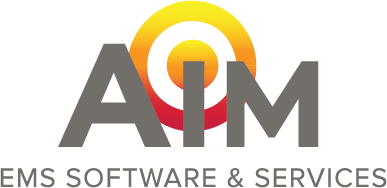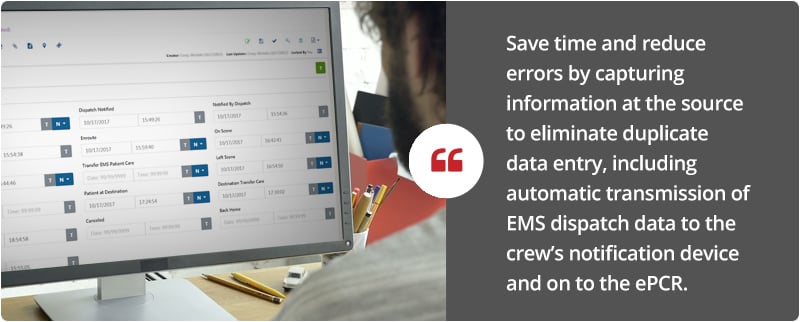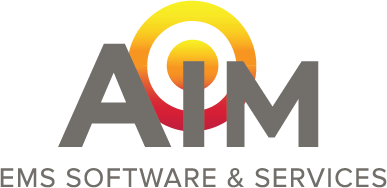Accurate ambulance dispatch is critical—it sets the stage for the ePCRs and insurance claims that follow.
EMS agencies continue to struggle to make ends meet. The cost of EMS patient care continues to rise, while ambulance reimbursement rates continue to disappoint. In addition, Federal and state regulations continue to multiply. When payers and regulators fail to see the immense value EMS brings to healthcare, economical solutions can be hard to find.
This post is the first in a series that we'll be writing this year. Each post will highlight one of ten EMS best practices intended to help your agency revitalize your organization, increase efficiency, and improve revenue.
EMS Best Practice #1: Ditch Manual Ambulance Dispatch Data Entry
If you fail to plan, then you plan to fail. When applied to EMS workflow, this means that a successful ambulance transport begins long before your crew leaves the station. It begins at EMS dispatch because EMS dispatch sets the stage for the ePCRs and insurance claims that follow.
For many agencies, EMS dispatch invites chaos and inefficiency. They receive a phone call, write down some information, and send an ambulance. These manual processes cause many inefficiencies. EMS professionals must enter the same data multiple times. Data cannot be validated to prevent simple human error. All this leads to downstream mistakes in patient care reporting and billing.
Get rid of manual dispatch data processes by investing in an automated EMS dispatch system. Improve quality by standardizing processes based on call type, such as emergency, non-emergency, scheduled and unscheduled. Validate data at EMS dispatch for accuracy. For example, repeat patient calls can be validated against previous EMS dispatch records. Save time and reduce errors by capturing information at the source to eliminate duplicate data entry, including automatic transmission of EMS dispatch data to the crew’s notification device and on to the ePCR.
Want to see all 10 EMS best practices?
Download our eBook, Ten Best Practices to Optimize EMS Workflow, to gain nine more best practices that will help you revitalize your organization, increase efficiency, and improve revenue. It includes concrete actions that you can take to streamline dispatch, simplify patient care reporting, and improve EMS billing to maximize reimbursement.





